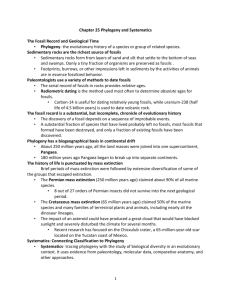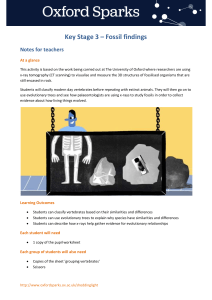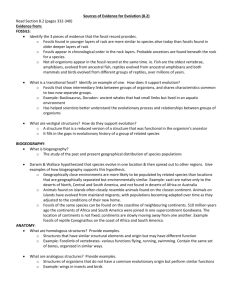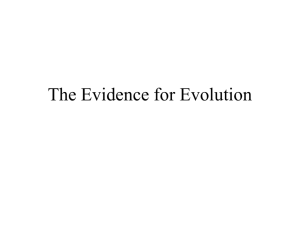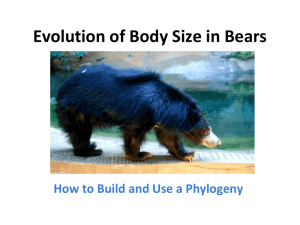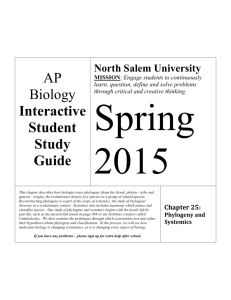Attachment 2
advertisement
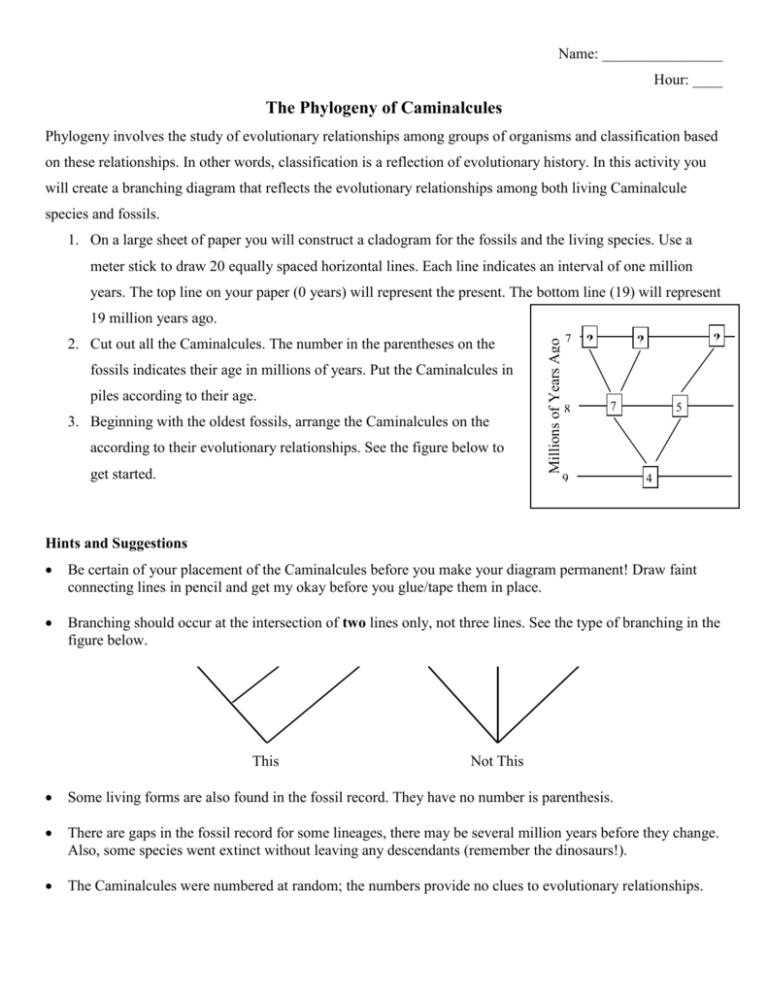
Name: ________________ Hour: ____ The Phylogeny of Caminalcules Phylogeny involves the study of evolutionary relationships among groups of organisms and classification based on these relationships. In other words, classification is a reflection of evolutionary history. In this activity you will create a branching diagram that reflects the evolutionary relationships among both living Caminalcule species and fossils. 1. On a large sheet of paper you will construct a cladogram for the fossils and the living species. Use a meter stick to draw 20 equally spaced horizontal lines. Each line indicates an interval of one million years. The top line on your paper (0 years) will represent the present. The bottom line (19) will represent 2. Cut out all the Caminalcules. The number in the parentheses on the fossils indicates their age in millions of years. Put the Caminalcules in piles according to their age. 3. Beginning with the oldest fossils, arrange the Caminalcules on the according to their evolutionary relationships. See the figure below to get started. Millions of Years Ago 19 million years ago. 7 7 8 8 ? ? ? 7 4 9 9 5 8 4 3 Hints and Suggestions Be certain of your placement of the Caminalcules before you make your diagram permanent! Draw faint connecting lines in pencil and get my okay before you glue/tape them in place. Branching should occur at the intersection of two lines only, not three lines. See the type of branching in the figure below. This Not This Some living forms are also found in the fossil record. They have no number is parenthesis. There are gaps in the fossil record for some lineages, there may be several million years before they change. Also, some species went extinct without leaving any descendants (remember the dinosaurs!). The Caminalcules were numbered at random; the numbers provide no clues to evolutionary relationships. Questions 1. Some Cams went extinct without leaving any descendants. Which ones? What is a real world example of this? _______________________________________________________________________________________ _______________________________________________________________________________________ _____________________________________________________________________ 2. What factors might increase or decrease the probability of a species going extinct? _______________________________________________________________________________________ _______________________________________________________________________________________ _____________________________________________________________________ 3. Some living species are also found in the fossil record. For example, the descendants of species 58 changed very little over time. A real world example of this kind of species is the cockroach or horseshoe crab. What sort of conditions might result in very little species change over time? _______________________________________________________________________________________ _______________________________________________________________________________________ _____________________________________________________________________ 4. What role does evolution have in the way we classify living organisms? Be specific. Use examples from the diagram you created with the Caminalcules. _______________________________________________________________________________________ _______________________________________________________________________________________ _____________________________________________________________________ 5. If you were assigned to put the living Caminalcules in groups, describe which would go together and why? _______________________________________________________________________________________ _______________________________________________________________________________________ _____________________________________________________________________

![NAME ________________________________________________ PALEONTOLOGY LECTURE TEST # 1 MATCHING [1 point each]:](http://s2.studylib.net/store/data/017772564_1-803887fc2e04015aa0f7f0fc62d90cb8-300x300.png)

